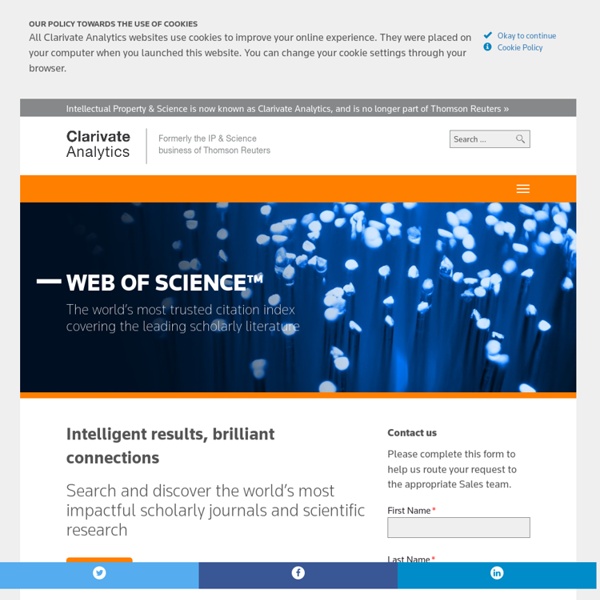Lasers etch a 'perfect' solar energy absorber
The University of Rochester research lab that recently used lasers to create unsinkable metallic structures has now demonstrated how the same technology could be used to create highly efficient solar power generators. In a paper in Light: Science & Applications, the lab of Chunlei Guo, professor of optics also affiliated with Physics and the Material Sciences Program, describes using powerful femto-second laser pulses to etch metal surfaces with nanoscale structures that selectively absorb light only at the solar wavelengths, but not elsewhere. A regular metal surface is shiny and highly reflective.
Stereoisomers
Stereoisomers As defined in an earlier introductory section, isomers are different compounds that have the same molecular formula. When the group of atoms that make up the molecules of different isomers are bonded together in fundamentally different ways, we refer to such compounds as constitutional isomers. For example, in the case of the C4H8 hydrocarbons, most of the isomers are constitutional. Shorthand structures for four of these isomers are shown below with their IUPAC names. Note that the twelve atoms that make up these isomers are connected or bonded in very different ways.
Introducción a las TIC en la educación - investigación
Notes: 1. The journals and professional magazines in this section generally fall into the scholarly field of Educational Technology. 2. Many of the sources on this page only allow limited access via their public web site - best to access these journals via your library's online catalogue to access the full text of articles. Searching for journals and magazines or specific papers Tips for searching (warning: web addresses may have changed without notice- how to help fix broken links) Practice-focused magazines and periodicals
Consensus in Science
If it’s consensus, it isn’t science. If it’s science, it isn’t consensus.Michael Crichton I recently read the quote above by Michael Crichton — and it pretty much sums up my opinion of consensus in science. I usually refer to Thomas Henry Huxley’s “Science commits suicide when it adopts a creed.”, but Crichton nails it as well.
Revistas - Investigación sobre las TIC en la Educación - Aprendizaje y Enseñanza - La Universidad de Sydney
Below is a list of online journals which may publish articles of interest to researchers or practitioners on the integration of ICT into teaching and learning. Australian Journal of Educational TechnologyAn online journal providing articles on educational technology, information and communications technologies for education, online and e-learning, educational design, multimedia, computer assisted learning, and related areas.(retrieved Jan 19, 2011)Electronic Journal of E-learningAn online journal which provides perspectives on topics relevant to the study, implementation and management of e-Learning initiatives including the development of both theory and practice in the field of e-Learning.
Why everybody laughs at Williamson, Lynn Margulis’ “best friend”
by Piter Kehoma Boll Leia em português What would you think if someone came to you and said that your pet snail accidentally got pregnant and you’re the father?
Science, Pseudoscience, and Irrationalism
Steven Dutch, Natural and Applied Sciences, University of Wisconsin - Green Bay First-time Visitors: Please visit Site Map and Disclaimer. Use "Back" to return here. What's Here and Not Here, And Why Things on this site generally fit one of the following criteria:
Navigating the sounds of the cosmos - 5:4
It’s been with no little excitement that i’ve watched the Curiosity Rover landing on Mars this week. Astronomy has been a back-burner interest of mine since i was a boy and, not surprisingly, i’ve been especially fond of the sound recordings produced by NASA from the data received by Voyagers I and II as they’ve travelled through and beyond the solar system. So i was intrigued last year to see an independent release of something called Voyager: Sounds of the Cosmos, a large-scale compilation of these NASA recordings, made available in three versions of increasing length, titled ‘Grand Tour Edition’, ‘Standard Edition’ and ‘Legacy Edition’ respectively. However, as i’ve spent more time with it, i couldn’t shake the feeling i’d heard these before, so i did some elementary investigating. It turns out—and the compiler, one Philip Graham (aka RazorEye), admits this on the Wikipedia page—that the compilation is a bootleg of earlier NASA releases, some of which are still readily available.
DARPA selects BAE to develop machine learning capabilities for space
BAE Systems has been awarded a Phase 2 contract to develop machine learning capabilities aimed to help the military gain better awareness of space scenarios for the U.S. Defense Advanced Research Projects Agency (DARPA). The goal of DARPA’s Hallmark Tools, Capabilities, and Evaluation Methodology (Hallmark-TCEM) programme is to not only develop and evaluate tools and capabilities that increase an operator’s understanding of space events, but also enhance the ability to select effective courses of action for any given situation, say the firm. “Space assets such as satellites are becoming increasingly important and relied upon by the Department of Defense for communications, surveillance, and security. As part of Hallmark-TCEM, BAE Systems’ FAST Labs research and development team will build cognitive-based machine learning algorithms and data models aimed to give space operators the ability to identify abnormal activities and predict possible threats.
Lab-grown mini brains shed light on how humans split from great apes
Humans diverged from chimpanzees and other great apes roughly 6m years ago. But despite us being closely related, human brains are vastly different – enabling us to engage in complex language, science, art, morality and much more. But what exactly was it that enabled our brains to reach such mindboggling heights? We know that the human brain has dramatically expanded in size over the past 6m years. Humans are in fact the mammals with the largest brain relative to body size. But which specific evolutionary genetic changes enabled larger and more complex brains has long remained a bit of a mystery.



